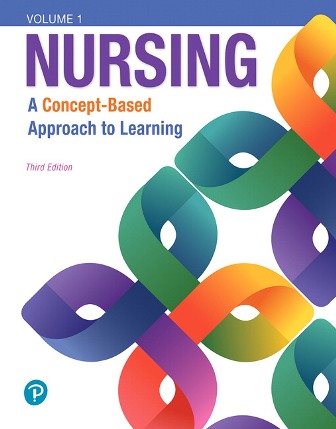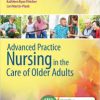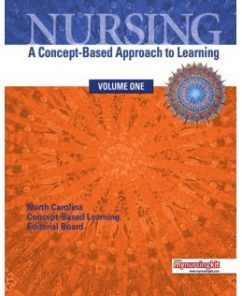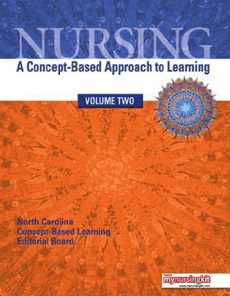Test Bank for Nursing: A Concept-Based Approach to Learning Volume I Pearson
$55.00 Original price was: $55.00.$29.99Current price is: $29.99.
Test Bank for Nursing: A Concept-Based Approach to Learning Volume I Pearson
Instant download Test Bank for Nursing: A Concept-Based Approach to Learning Volume I Pearson pdf docx epub after payment.

Clinical Nursing Skills: A Concept-Based Approach, 3e (Pearson)
Chapter 1 Assessment
1) A client on the medical/surgical unit complains of sudden chest pains. Which is the first action the nurse will implement?
- A) Call the health care provider.
- B) Administer pain medication.
- C) Reassess a new set of vital signs.
- D) Turn client from supine to lateral.
Answer: C
Explanation: A) The nurse will need to reassess the client first, before calling the healthcare provider.
- B) The nurse will need to reassess the client first, before administering pain medication.
- C) The nurse needs to implement a new set of vital signs first when there is a change in condition.
- D) The nurse will need to reassess the client first, before moving the client, to avoid making the change in client’s condition worse.
Page Ref: 3
Cognitive Level: Applying
Client Need/Sub: Reduction of Risk Potential: System Specific Assessments
Standards: Nursing Process: Implementation | Learning Outcome: 1.1 | QSEN Competencies: Patient-Centered Care
AACN Ess. Comps.: Essential IX: Baccalaureate Generalist Nursing Practice
NLN Competencies: Relationship Centered Care
2) The nurse is observing the UAP taking the temperature of an unconscious client. Which route will the nurse question the UAP using?
- A) Oral
- B) Rectal
- C) Scanner
- D) Tympanic
Answer: A
Explanation: A) The temperature of an unconscious client is never taken by mouth. The rectal, tympanic, or scanner method is preferred.
- B) The rectal, tympanic, or scanner method is preferred.
- C) The rectal, tympanic, or scanner method is preferred.
- D) The rectal, tympanic, or scanner method is preferred.
Page Ref: 24
Cognitive Level: Remembering
Client Need/Sub: Management of Care: Assignment, Delegation, and Supervision
Standards: Nursing Process: Evaluation | Learning Outcome: 1.1 | QSEN Competencies: Safety
AACN Ess. Comps.: Essential IX: Baccalaureate Generalist Nursing Practice
NLN Competencies: Quality and Safety
3) The nurse is changing a 2-month-old client’s diaper and notes the client feels warm to touch. Which is the best method for checking this baby’s temperature?
- A) Oral
- B) Rectal
- C) Axillary
- D) Tympanic membrane
Answer: C
Explanation: A) Oral is used for age 3 or older.
- B) The rectal route is the least desirable.
- C) The tympanic membrane route may be more accurate in determining temperature in febrile newborns or infants.
- D) The tympanic membrane may be used for 3 months or older.
Page Ref: 29
Cognitive Level: Understanding
Client Need/Sub: Reduction of Risk Potential: Diagnostic Tests
Standards: Nursing Process: Evaluating | Learning Outcome: 1.2 | QSEN Competencies: Safety
AACN Ess. Comps.: Essential IX: Baccalaureate Generalist Nursing Practice
NLN Competencies: Quality and Safety
4) A client comes in with exacerbation of chronic obstructive pulmonary disease (COPD). Which noninvasive diagnostic test will the nurse implement to know that the client is receiving enough oxygen?
- A) Chest x-ray
- B) Pulse oximeter
- C) Arterial blood gasses
- D) Assessment of respiratory rate
Answer: B
Explanation: A) A chest x-ray is not an intervention a nurse completes.
- B) A pulse oximeter provides a noninvasive method of measuring oxygenation, or oxygen saturation, in the blood and provides a pulse reading, which is especially helpful for the client with a respiratory illness or disease.
- C) Arterial blood gases are an invasive diagnostic test.
- D) Assessing a respiratory rate is important for the nurse to implement; however, it is not a diagnostic test.
Page Ref: 21
Cognitive Level: Applying
Client Need/Sub: Reduction of Risk Potential: Diagnostic Tests
Standards: Nursing Process: Implementation | Learning Outcome: 1.3 | QSEN Competencies: Informatics
AACN Ess. Comps.: Essential IX: Baccalaureate Generalist Nursing Practice
NLN Competencies: Quality and Safety
5) Which is the most important question the nurse should ask a client before performing a routine musculoskeletal assessment?
- A) “Do you exercise every day?”
- B) “Do you have a history of any sports injuries?”
- C) “Do you take a hot bath to relax your muscles?”
- D) “Do you want pain medication before I begin?”
Answer: B
Explanation: A) Knowing if a client exercises is an important question but knowing if there are any sports injuries to know about first, is most important before doing a routine musculoskeletal assessment.
- B) It is important to note if the client has a history of any sports injuries first to know what the client will or will not be able to do during a routine musculoskeletal assessment.
- C) Knowing if the client takes a hot bath to relax the muscles is not the most important to ask before performing a routine musculoskeletal assessment.
- D) To know if a client is experiencing any pain is an important question; however, this question is assuming the client is in pain by asking if the client wants a pain medication before beginning a routine musculoskeletal assessment.
Page Ref: 62
Cognitive Level: Analyzing
Client Need/Sub: Safety and Infection Control: Accident/Error/Injury Prevention
Standards: Nursing Process: Assessment | Learning Outcome: 1.5 | QSEN Competencies: Safety
AACN Ess. Comps.: Essential IX: Baccalaureate Generalist Nursing Practice
NLN Competencies: Quality and Safety
6) A client’s daughter mentions to the nurse that her mom seems to have a decline in mental status and seems to be forgetting many things in their conversation since this hospitalization. Which is the best response by the nurse?
- A) “Give your mom time, because it will take her a little longer when answering questions.”
- B) “Let me check the cranial nerve function to see if there is a defect in her mental status.”
- C) “You do not need to worry. This decline is part of the normal process of aging.”
- D) “If you bring some things from her home, it might reduce the confusion.”
Answer: D
Explanation: A) This is expected to give some older adults time to respond, but the daughter is concerned about her forgetting, not the length of the response.
- B) Cranial nerve function is an assessment of the cranial nerves and not the mental status of a client.
- C) A decline in mental status is not a normal result of aging, so this response is not true.
- D) The stress of being in unfamiliar situations can cause confusion in some older adults.
Page Ref: 68
Cognitive Level: Analyzing
Client Need/Sub: Psychosocial Integrity: Therapeutic Environment
Standards: Nursing Process: Planning | Learning Outcome: 1.6 | QSEN Competencies: Patient-Centered Care
AACN Ess. Comps.: Essential IX: Baccalaureate Generalist Nursing Practice
NLN Competencies: Context and Environment
7) The nurse coming on duty received in report that the client’s lung sounds were clear to auscultation in all lobes. The nurse coming on heard moderate-intensity and moderate-pitch “blowing” sounds between the scapulae and lateral to the sternum at the first and second intercostal spaces when doing her own assessment. Which should the nurse do next?
- A) Encourage the client to cough and deep breathe.
- B) Notify the healthcare provider of abnormal breath sounds.
- C) Document assessment findings as normal breath sounds.
- D) Raise the head of the bed to allow maximum air excursion.
Answer: C
Explanation: A) The nurse would implement this if these were adventitious lung sounds; however, these are bronchovesicular sounds.
- B) The nurse would notify the healthcare provider if these were adventitious lung sounds; however, these are bronchovesicular sounds.
- C) This is correct, because these are bronchovesicular sounds.
- D) The nurse would implement this if these were adventitious lung sounds; however, these are bronchovesicular sounds.
Page Ref: 88
Cognitive Level: Analyzing
Client Need/Sub: Health Promotion and Maintenance: Techniques of Physical Assessment
Standards: Nursing Process: Assessment | Learning Outcome: 1.7 | QSEN Competencies: Patient-Centered Care
AACN Ess. Comps.: Essential IX: Baccalaureate Generalist Nursing Practice
NLN Competencies: Context and Environment
8) A new client came to the clinic complaining of shortness of breath and fever. How long should the triage nurse count the peripheral pulse?
- A) 15 seconds
- B) 30 seconds
- C) 1 minute
- D) 2 minutes
Answer: C
Explanation: A) Count for a full minute if taking a client’s pulse for the first time.
- B) Count for a full minute if taking a client’s pulse for the first time.
- C) Count for a full minute if taking a client’s pulse for the first time.
- D) Count for a full minute if taking a client’s pulse for the first time.
Page Ref: 19
Cognitive Level: Applying
Client Need/Sub: Health Promotion and Maintenance: Techniques of Physical Assessment
Standards: Nursing Process: Assessment | Learning Outcome: 1.8 | QSEN Competencies: Patient-Centered Care
AACN Ess. Comps.: Essential IX: Baccalaureate Generalist Nursing Practice
NLN Competencies: Quality and Safety
9) Prior to administering digoxin, which should the nurse assess first?
- A) Temperature
- B) Apical pulse
- C) Respiratory rate
- D) Pain using a pain scale
Answer: B
Explanation: A) The nurse should assess the apical pulse before the administration of a medication that could affect the cardiovascular systems, such as before giving a digitalis preparation.
- B) The nurse should assess the apical pulse before the administration of a medication that could affect the cardiovascular systems, such as before giving a digitalis preparation.
- C) The nurse should assess the apical pulse before the administration of a medication that could affect the cardiovascular systems, such as before giving a digitalis preparation.
- D) The nurse should assess the apical pulse before the administration of a medication that could affect the cardiovascular systems, such as before giving a digitalis preparation.
Page Ref: 3
Cognitive Level: Applying
Client Need/Sub: Health Promotion and Maintenance: Techniques of Physical Assessment
Standards: Nursing Process: Assessment | Learning Outcome: 1.4 | QSEN Competencies: Patient-Centered Care
AACN Ess. Comps.: Essential IX: Baccalaureate Generalist Nursing Practice
NLN Competencies: Quality and Safety
10) When measuring the newborn during a general assessment, which is the correct assessment?
- A) Wrap the tape measure around the head below the ears.
- B) Wrap the tape measure around the head starting at the nose.
- C) Wrap the tape measure around the abdomen at the umbilicus.
- D) Wrap the tape measure around the chest below the nipple line.
Answer: C
Explanation: A) When measuring the head circumference, wrap the tape around the head at the supraorbital prominence above the eyebrows, above the ears, and around the occipital prominence.
- B) When measuring the head circumference, wrap the tape around the head at the supraorbital prominence above the eyebrows, above the ears, and around the occipital prominence.
- C) Correct. When measuring the abdomen circumference, wrap the tape around the abdomen at the level of the umbilicus.
- D) When measuring the chest circumference, wrap the tape measure around the chest, placed just under the axilla and at the nipple line.
Page Ref: 9
Cognitive Level: Applying
Client Need/Sub: Health Promotion and Maintenance: Techniques of Physical Assessment
Standards: Nursing Process: Assessment | Learning Outcome: 1.4 | QSEN Competencies: Patient-Centered Care
AACN Ess. Comps.: Essential IX: Baccalaureate Generalist Nursing Practice
NLN Competencies: Quality and Safety
11) Which would cause an erroneously low blood pressure during a general assessment for an adult client?
- A) Bladder to cuff ratio too wide
- B) Arm unsupported
- C) Cuff wrapped too loosely
- D) Arm below heart level
Answer: A
Explanation: A) The width of the bladder cuff needs to be 40% of the circumference or 20% wider than the diameter of the midpoint.
- B) If the arm is unsupported, it will cause an erroneously high blood pressure.
- C) If the cuff is wrapped too loosely, it will cause an erroneously high blood pressure.
- D) If the arm is below heart level, it will cause an erroneously high blood pressure.
Page Ref: 15
Cognitive Level: Analyzing
Client Need/Sub: Health Promotion and Maintenance: Techniques of Physical Assessment
Standards: Nursing Process: Assessment | Learning Outcome: 1.4 | QSEN Competencies: Patient-Centered Care
AACN Ess. Comps.: Essential IX: Baccalaureate Generalist Nursing Practice
NLN Competencies: Quality and Safety
12) Based on the information provided, which client should the nurse see first?
- A) Infant respirations 38/min
- B) 2-year-old pulse 112/min
- C) 6-year-old axillary temperature 97.5°F
- D) 10-year-old blood pressure 138/88
Answer: D
Explanation: A) An infant’s respiration range is 20-40/min.
- B) A 2-year-old child’s pulse range is 70-120/min.
- C) A 6-year-old child’s temperature range is 98.6°F but axillary is 1°F lower than oral.
- D) A 10-year-old child’s blood pressure range is systolic 95-116 and diastolic 60-70. This is much higher than the range for the age of this client.
Page Ref: 15
Cognitive Level: Analyzing
Client Need/Sub: Health Promotion and Maintenance: Techniques of Physical Assessment
Standards: Nursing Process: Assessment | Learning Outcome: 1.4 | QSEN Competencies: Patient-Centered Care
AACN Ess. Comps.: Essential IX: Baccalaureate Generalist Nursing Practice
NLN Competencies: Quality and Safety
13) Which is the best route to check a temperature for a client who is diaphoretic? Select all that apply.
- A) Oral
- B) Rectal
- C) Axillary
- D) Tympanic
- E) Heat sensitive
Answer: A, B, D
Explanation: A) Oral does not interfere with diaphoresis because the probe is in the mouth.
- B) Rectal does not interfere with diaphoresis because the probe is in the rectum.
- C) Axillary might be wet and cause an error in the reading temperature.
- D) Tympanic does not interfere with diaphoresis because the probe is in the ear. However, do not use if ear is draining or infected.
- E) Heat sensitive might have areas of the skin that are wet and cause an error in reading temperature.
Page Ref: 26, 28
Cognitive Level: Analyzing
Client Need/Sub: Health Promotion and Maintenance: Techniques of Physical Assessment
Standards: Nursing Process: Assessment | Learning Outcome: 1.4 | QSEN Competencies: Patient-Centered Care
AACN Ess. Comps.: Essential IX: Baccalaureate Generalist Nursing Practice
NLN Competencies: Quality and Safety
14) Which is the best response by the nurse when explaining to the client as to why the stethoscope is warmed up before placing it on the abdomen?
- A) “I might hear a friction rub with a cold stethoscope.”
- B) “A nice nurse will put a warm stethoscope on your abdomen.”
- C) “A cold stethoscope may cause your abdominal muscles to contract.”
- D) “Warming up the stethoscope will help with the digestion of your food.”
Answer: C
Explanation: A) The nurse might hear a friction rub due to an inflammation, infection, or abdominal growth, not from a cold stethoscope.
- B) Warming up a stethoscope can be nice for client’s comfort; however, it is to decrease the abdominal muscles to contract, otherwise the nurse might hear unnecessary contractions.
- C) A cold stethoscope may cause your abdominal muscles to contract which the nurse might hear with a cold stethoscope.
- D) Warming up the stethoscope has no effect with digestion of food. A warm stethoscope will decrease the abdominal muscles to contract, so the nurse will not hear any unnecessary noises.
Page Ref: 31
Cognitive Level: Analyzing
Client Need/Sub: Health Promotion and Maintenance: Techniques of Physical Assessment
Standards: Nursing Process: Assessment | Learning Outcome: 1.4 | QSEN Competencies: Patient-Centered Care
AACN Ess. Comps.: Essential IX: Baccalaureate Generalist Nursing Practice
NLN Competencies: Quality and Safety
15) Which are signs and symptoms of colon cancer? Select all that apply.
- A) Weight gain
- B) Rectal bleeding
- C) Unusual cough
- D) Change in bowel function
- E) Decrease medication absorption
Answer: B, D
Explanation: A) Weight loss, not gain, is a sign and symptom of colon cancer.
- B) Correct.
- C) Unusual cough is more a sign and symptom of a lung infection or lung cancer.
- D) Correct
- E) A decrease in medication absorption often occurs with aging, not colon cancer.
Page Ref: 34
Cognitive Level: Applying
Client Need/Sub: Health Promotion and Maintenance: Techniques of Physical Assessment
Standards: Nursing Process: Assessment | Learning Outcome: 1.4 | QSEN Competencies: Patient-Centered Care
AACN Ess. Comps.: Essential IX: Baccalaureate Generalist Nursing Practice
NLN Competencies: Quality and Safety
16) Which is the appropriate way to hold the ear when inspecting the tympanic membrane of a 2-year-old client?
- A) Pull the pinna up and back.
- B) Pull the pinna up and forward.
- C) Pull the pinna down and back.
- D) Pull the pinna down and forward.
Answer: C
Explanation: A) Pulling the pinna up and back will straighten the ear canal for a client greater than 3 years old.
- B) Pulling the pinna up and forward will not allow sufficient visualization of the ear.
- C) Pulling the pinna down and back will straighten the ear canal for a client less than 3 years old.
- D) Pulling the pinna down and forward will not allow sufficient visualization of the ear.
Page Ref: 43
Cognitive Level: Applying
Client Need/Sub: Health Promotion and Maintenance: Techniques of Physical Assessment
Standards: Nursing Process: Assessment | Learning Outcome: 1.4 | QSEN Competencies: Patient-Centered Care
AACN Ess. Comps.: Essential IX: Baccalaureate Generalist Nursing Practice
NLN Competencies: Quality and Safety
17) Which does the nurse observe during the assessment while documenting a Tanner Stage 5?
- A) There is no pubic hair except for fine body hair.
- B) Pubic hair is developing along the labia.
- C) Pubic hair distribution extends to umbilicus.
- D) Pubic hair appears on the inner aspect of the thigh.
Answer: D
Explanation: A) No pubic hair is Tanner Stage 1.
- B) Pubic hair developing along the labia is Stage 2.
- C) Pubic hair distribution extends to umbilicus is Stage 5 but for men only.
- D) Pubic hair appears on the inner aspect of the thigh for Stage 5.
Page Ref: 51
Cognitive Level: Remembering
Client Need/Sub: Health Promotion and Maintenance: Techniques of Physical Assessment
Standards: Nursing Process: Assessment | Learning Outcome: 1.4 | QSEN Competencies: Patient-Centered Care
AACN Ess. Comps.: Essential IX: Baccalaureate Generalist Nursing Practice
NLN Competencies: Quality and Safety
18) The UAP notifies the nurse of these vital signs for a client on the medical-surgical unit: temperature 97.6°F, respirations 22, pulse 122, and BP 98/72. Which is the best action the nurse should do next?
- A) Ask the UAP to reassess the client.
- B) Inform the UAP to document these vital signs.
- C) Reassess the client to validate these vital signs.
- D) Notify the healthcare provider of these vital signs.
Answer: C
Explanation: A) UAP cannot assess or reassess as evaluation of data.
- B) These vital signs are abnormal; the nurse needs to reassess the client to validate these findings.
- C) The nurse needs to reassess the client to validate these findings.
- D) The nurse will notify the healthcare provider of these vital signs after the nurse reassesses the client to validate these findings.
Page Ref: 2
Cognitive Level: Analyzing
Client Need/Sub: Health Promotion and Maintenance: Techniques of Physical Assessment
Standards: Nursing Process: Assessment | Learning Outcome: 1.4 | QSEN Competencies: Patient-Centered Care
AACN Ess. Comps.: Essential IX: Baccalaureate Generalist Nursing Practice
NLN Competencies: Quality and Safety
19) Which does the nurse observe for an adult client who has a negative Babinski response?
- A) All toes turn inward.
- B) All toes curve upward.
- C) All toes spread outward.
- D) All toes bend downward.
Answer: D
Explanation: A) This is not in relation to the Babinski response; it could be another problem.
- B) A positive Babinski response is when the toes spread outward and the big toe moves upward and backward.
- C) A positive Babinski response is when the toes spread outward and the big toe moves upward and backward.
- D) All toes bend downward for a negative Babinski response on an adult.
Page Ref: 70
Cognitive Level: Analyzing
Client Need/Sub: Health Promotion and Maintenance: Techniques of Physical Assessment
Standards: Nursing Process: Assessment | Learning Outcome: 1.4 | QSEN Competencies: Patient-Centered Care
AACN Ess. Comps.: Essential IX: Baccalaureate Generalist Nursing Practice
NLN Competencies: Quality and Safety
20) Before completing a blood pressure on an adult, which should the nurse do next after introducing self?
- A) Provide privacy.
- B) Perform handwashing.
- C) Identify the client with two identifiers.
- D) Explain what he or she will be doing with the client.
Answer: C
Explanation: A) Need to identify the right client before providing privacy so you know you are in the right room.
- B) Need to identify the right client before performing handwashing so you know you are in the right room.
- C) The nurse needs to identify the right client before doing anything else after introducing self.
- D) The nurse needs to identify the right client before explaining the procedure so the client knows why the nurse is in the room.
Page Ref: 14
Cognitive Level: Understanding
Client Need/Sub: Health Promotion and Maintenance: Techniques of Physical Assessment
Standards: Nursing Process: Assessment | Learning Outcome: 1.4 | QSEN Competencies: Patient-Centered Care
AACN Ess. Comps.: Essential IX: Baccalaureate Generalist Nursing Practice
NLN Competencies: Quality and Safety
21) The nurse is completing an assessment on a client who just received morphine. Which is the nurse’s highest priority?
- A) Pain level
- B) Respirations
- C) Temperature
- D) Blood pressure
Answer: B
Explanation: A) Pain level has already been assessed because the client just received morphine and it is too early to reassess pain.
- B) Respirations are highest priority after administering morphine because morphine can cause respiratory depression.
- C) The temperature of a client is not affected by morphine or pain.
- D) Blood pressure can change because of the client’s pain; however, the highest priority for this client is respirations because morphine was just administered.
Page Ref: 23
Cognitive Level: Applying
Client Need/Sub: Health Promotion and Maintenance: Techniques of Physical Assessment
Standards: Nursing Process: Assessment | Learning Outcome: 1.4 | QSEN Competencies: Patient-Centered Care
AACN Ess. Comps.: Essential IX: Baccalaureate Generalist Nursing Practice
NLN Competencies: Quality and Safety
22) After receiving shift report, which of the following clients should the nurse assess first?
- A) Kussmaul respirations
- B) Blood glucose of 144
- C) Pain level 6 out of 10
- D) Temperature is 101.8°F
Answer: A
Explanation: A) This client is probably experiencing diabetic ketoacidosis or going into shock and needs to be reassessed immediately.
- B) The glucose is elevated in this client, but the Kussmaul breathing has a higher priority.
- C) The pain level is moderate pain.
- D) The temperature is elevated, but Kussmaul breathing has a higher priority.
Page Ref: 91
Cognitive Level: Analyzing
Client Need/Sub: Health Promotion and Maintenance: Techniques of Physical Assessment
Standards: Nursing Process: Assessment | Learning Outcome: 1.4 | QSEN Competencies: Patient-Centered Care
AACN Ess. Comps.: Essential IX: Baccalaureate Generalist Nursing Practice
NLN Competencies: Quality and Safety
23) Which task can the nurse delegate to the UAP?
- A) Administration of medication
- B) Recording findings from a sponge bath
- C) Teaching a client how to take own vital signs
- D) Assessing a client in the medical-surgical unit for two days
Answer: B
Explanation: A) Administration of medication requires licensed personnel to administer.
- B) A UAP can record the findings from a sponge bath because the skin is observed during a UAP’s usual care.
- C) UAPs cannot teach clients because this is outside their scope of practice.
- D) Assessing is outside the UAP’s scope of practice.
Page Ref: 79
Cognitive Level: Applying
Client Need/Sub: Health Promotion and Maintenance: Techniques of Physical Assessment
Standards: Nursing Process: Assessment | Learning Outcome: 1.4 | QSEN Competencies: Patient-Centered Care
AACN Ess. Comps.: Essential IX: Baccalaureate Generalist Nursing Practice
NLN Competencies: Quality and Safety
24) Which statement made by the UAP is best in understanding the teaching from the nurse?
- A) “I will clean the site after applying the sensor.”
- B) “I will move the adhesive toe or finger sensor once a shift.”
- C) “I will remove any fingernail polish when using a pulse oximeter.”
- D) “I will use the side of the finger rather than perpendicular to the nail bed.”
Answer: D
Explanation: A) The site needs to be cleaned before applying the sensor.
- B) The adhesive toe or finger sensor needs to be moved every four hours.
- C) The UAP needs to remove dark fingernail polish.
- D) Correct. The side of the finger is an alternate use if the client has dark fingernail polish on the fingernail.
Page Ref: 21
Cognitive Level: Applying
Client Need/Sub: Health Promotion and Maintenance: Techniques of Physical Assessment
Standards: Nursing Process: Assessment | Learning Outcome: 1.4 | QSEN Competencies: Patient-Centered Care
AACN Ess. Comps.: Essential IX: Baccalaureate Generalist Nursing Practice
NLN Competencies: Quality and Safety
You may also like…
Test Bank
Test Bank for Nursing: A Concept-Based Approach to Learning, Volume II (3rd Edition) 3rd Edition
Test Bank
Test Bank for Nursing A Concept-Based Approach to Learning 3rd VOLUME 1 by Pearson Education
Test Bank
Test Bank for Clinical Nursing Skills: A Concept-Based Approach Volume III 3rd Edition Callahan












